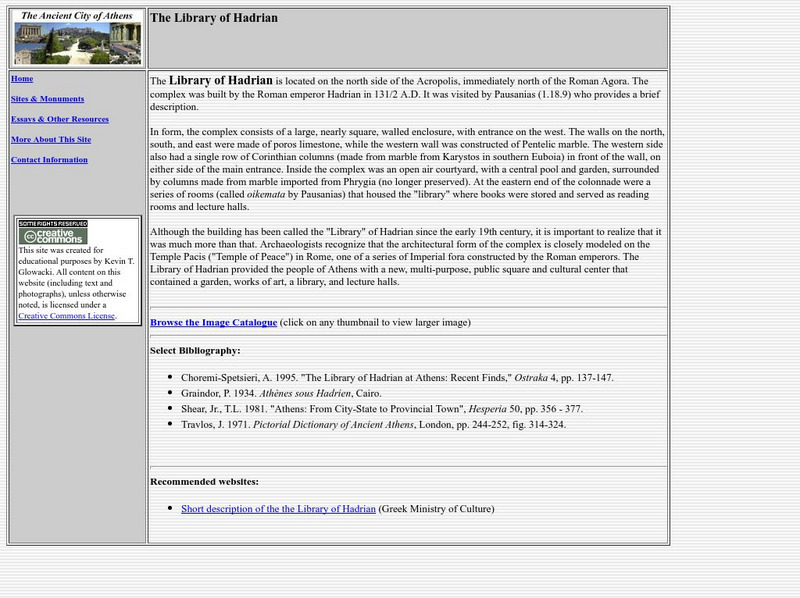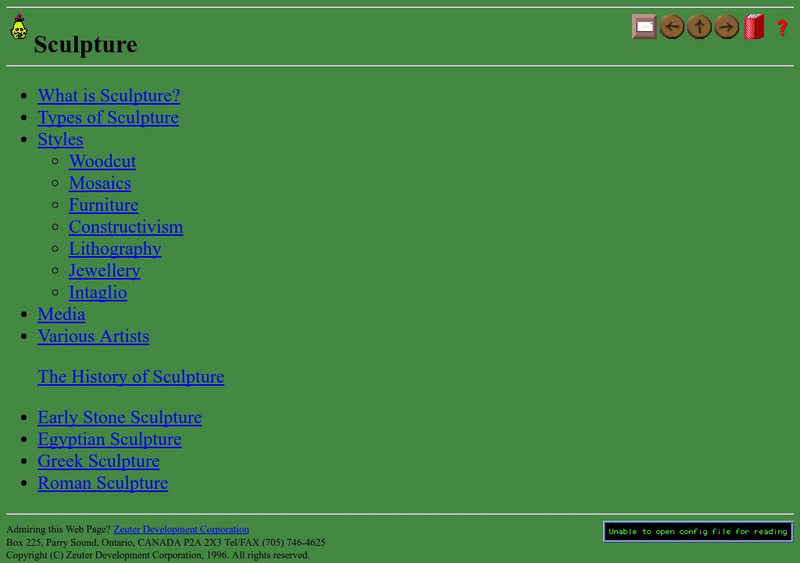Hi, what do you want to do?
Other
The Ecole Initiative: Stoicism
This site from the University of Evansville provides an extensive look at Stoicism, its background, and the philosophers who influenced this philosophy. Very in-depth and informative, with great information.
Other
Ken Farshtey: Change From River Valleys to Classic Civilizations [Pdf]
This slide presentation provides an in-depth look at the Indian, Chinese and Mediterranean world's development from river valleys into classic civilizations. Early river valleys and classic civilizations are described on a broad spectrum...
Other
The History of Writing
This explanation of the history of writing traces writing from the use of "Counting tokens," to the development of the Roman alphabet. The pictures of how writing has progressed over time is very interesting and helpful.
Other
Macedonian Heritage
Macedonian Heritage offers an extensive look at the history, affairs, and culture of Macedonia. You can see timelines, documents, and look at maps of the area.
Other
Central Washington University: Costume History
Focuses on the history of costumes and fashion from Egyptian times to the 1990s. Thumbnail links may no longer work as this is an older site. However, the 'Fads in Fashion Slides' page has many large images organized by time periods....
Khan Academy
Khan Academy: Marble Statue of the Emperor Hadrian
The Roman emperor Hadrian is shown here in the himation (a Greek mantle). This unique and well known statue is made up of fragments found in 1861 in the ruins of a temple in the city of Cyrene, in northern Africa.
World History Encyclopedia
World History Encyclopedia: Agora
Description with illustrations offers brief history of the Agora in ancient Greece.
Curated OER
Educational Technology Clearinghouse: Clip Art Etc: Sculpture and Coins
The figure in the middle of the following illustration is from a most ancient specimen of Etruscan sculpture, and represents an augur with his lituus, or staff. The others are Roman denarii. - Anthon, 1891
Curated OER
Educational Technology Clearinghouse: Maps Etc: Italy, 343 263 Bc
Map of Italy, from the beginning of the Samnite Wars (343 BC) to the beginning of the Punic Wars (264 BC). The map is color-coded to show portions of the Liguria, Gallia, Venetia, and Istria territories in the north, the Carthaginian,...
Curated OER
Educational Technology Clearinghouse: Clip Art Etc: Tintinna'bulum
"Tintinna'bulum, a bell. Bells were of various forms among the Greeks and Romans, as among us. various specimens of them are given in the annexed cut." &mdash Smith; 1873
Curated OER
Educational Technology Clearinghouse: Clip Art Etc: Flavius Josephus
Flavius Josephus was a strange amalgamation of Jew, Greek, and Roman, admittedly not what he should have been, either as a teacher of Mosiac law, as a patriot, or as a public man; and yet he performed successfully what he could not have...
Other
The Stoa Consortium: The Library of Hadrian
The Library of Hadrian is located on the north side of the Acropolis, immediately north of the Roman Agora. The complex was built by the Roman emperor Hadrian in 131/2 A.D. It was visited by Pausanias (1.18.9) who provides a brief...
Other
Theatron: The Theater of Dionysus
Information and recreated models of the Theater of Dionysus, showing its architectural evolution and transformation over time, from the fifth century B.C. through the Roman imperial period.
Other
Zeus: The Olympian
This essay tells the story of Zeus (Roman name "Jupiter"), who was hidden from his father at birth, and how he came to rule all the other gods and the whole earth. Includes citations to the mentions of Zeus in The Iliad and The Odyssey.
Curated OER
Educational Technology Clearinghouse: Clip Art Etc: Mithradates Vi Coin
An illustration of Mithradates VI on the face of a coin. Mithradates VI was king of Pontus in northern Anatolia (now in Turkey) from about 119 to 63 BC. Mithradates was a king of Greek and Persian origin, claimed descent from Alexander...
University of Oxford (UK)
Beazley Archive: Hades
Illustrated dictionary entry for Greek God Hades. Describes the location of Hades, the significance of Hades, and other Greek symbols associated with Hades.
Other
Alien Travel Guide: All About Sculpture
This is a descriptive site that offers information on types, styles, media, artists, history, and periods in creation of sculpture.
Curated OER
Etc: Rome and Carthage on the Eve of and During the First Punic War, 264 241 Bc
A map of Rome and Carthage during the First Punic War (264-241 BC). This map is color-coded to show the extent of the Roman Empire in yellow and the Carthaginian territory in pink. At the beginning of the war, the Roman Empire covered...
CommonLit
Common Lit: Excerpt From "The Odyssey: The Sirens" by Homer
"The Odyssey" is an epic poem about a Greek hero named Odysseus, also known as Ulysses in Roman myths, and his 10-year journey home after the fall of Troy. In this excerpt, Ulysses encounters the Sirens while at sea. A specific purpose...
Curated OER
Educational Technology Clearinghouse: Maps Etc: Plan of Olympia, 776 445 Bc
A plan of the ancient Greek sanctuary of Olympia, the site of the Olympic Games. Olympia is near the Peloponnese city of Elis. The plan shows the location of the stadium, gymnasium, temple, and other ancient features, including buildings...
Travel Document Systems
Tds: Morocco: History
Read this concise history of Morocco which concentrates on its development after its independence from France. Information is from the U.S. State Dept. Background Notes.
Curated OER
Educational Technology Clearinghouse: Clip Art Etc: Puteal
Puteal, properly means the enclosure surrounding the opening of a well, to protect persons from falling into it. It was either round or square, and seems usually to have been of the height of three or four feet from the ground. It was...
Curated OER
Educational Technology Clearinghouse: Clip Art Etc: Gladiators
This illustration shows various types of gladiators, each type with with his specific weapons attributed to him. Gladiators were swordsmen whose profession was to fight for the public amusement. Gladiators are said to have been borrowed...
Curated OER
Educational Technology Clearinghouse: Clip Art Etc: Pileus
Any piece of felt; more especially, a skull-cap of felt, a hat. These seems no reason to doubt that felting is a more ancient invention than weaving, not that both of these arts came into Europe from Asia. From the Greeks, who were...













